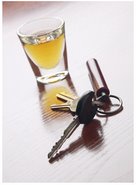Rod Gullberg, Washington State Patrol Breath Test Section
811 East Roanoke Seattle, WA 98102
"Mouth Alcohol", resulting from regurgitation or recently consumed alcohol, has long been a concern in forensic toxicology because of the potential for biasing an end-expiratory breath alcohol measurement. Manufacturers of forensic breath alcohol instruments have attempted to address the issue in part by developing software algorithms that attempt to identify ‘mouth alcohol" and abort the test if detected as present. These algorithms (as in the case of the BAC Datamaster, National Patent Analytical Systems, Inc.) generally evaluate the slopes of the breath alcohol expirogram and will abort the test if the slope is sufficiently negative.
Experimental breath alcohol expirograms were collected from drinking subjects both with and with out the presence of "mouth alcohol". The data reveals that for subjects already having measurable breath alcohol, biases can exist in end-expiratory measurements and remain undetected by the "mouth alcohol" detection algorithm within the BAC Datamaster instrument. These biases occur at approximately five minutes after exposure to "mouth alcohol" because the expirogram does not conform to that assumed by the instrumental algorithm. These biases are unlikely to occur in sober subjects. Rather than relying on instrumental features to minimize the risk of "mouth alcohol" bias, sound protocol employing a 15 minute observation period and duplicate testing will enhance confidence in results to a much greater extent.
Subscribe to:
Post Comments (Atom)


No comments:
Post a Comment